Nikon Nikkor AF-S 24-70 mm f/2.8E ED VR
3. Build quality and image stabilization
In the photo below the tested lens is positioned next to its not stabilized predecessor.
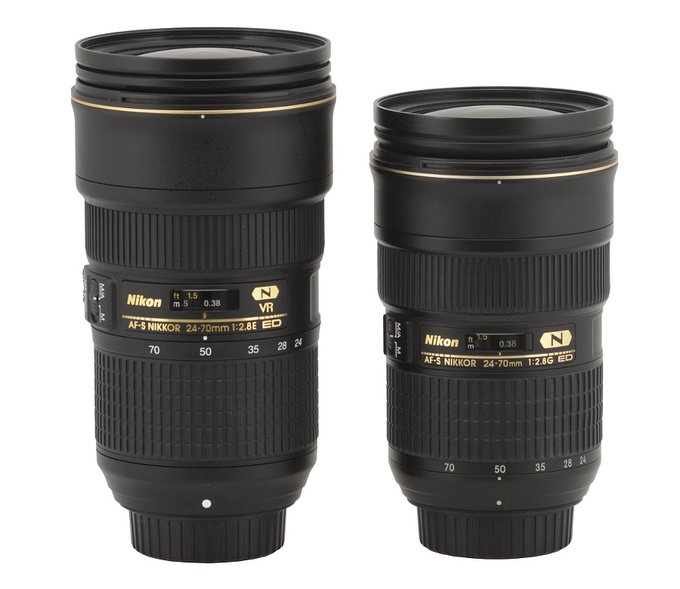 |
Please Support UsIf you enjoy our reviews and articles, and you want us to continue our work please, support our website by donating through PayPal. The funds are going to be used for paying our editorial team, renting servers, and equipping our testing studio; only that way we will be able to continue providing you interesting content for free. |
- - - - - - - - - - - - - - - - - - - - - - - - - - - - - - - - - - - - - - - - - - - - - - - -
The Nikkor AF-S 24–70ámm f/2.8E EDáVR starts with a metal mount which surrounds a contact plate and a rear element, 31 mm in diameter. That element is positioned on the same level as the contacts with the focal length set at 24 mm and it hides almost 2 cm inside the casing when you pass to 70 mm. The interior of the tube, revealed in that process, is well darkened and matted.
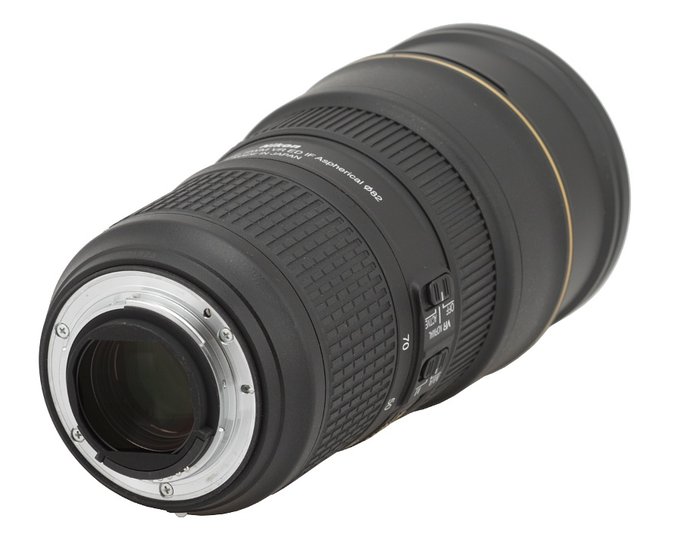 |
The proper lens begins with a non-rotating ring on which you can find a white dot, making the alignment with a camera easier. In the case of the previous version of the Nikkor 24-70 f/2.8 that ring was made of metal; now you deal with a completely plastic part.
Next you see a zoom ring, as wide as 42 mm. Most of its surface is covered by rubber ribbing over which you can find focal length markings at 24, 28, 35, 50 and 70 mm.
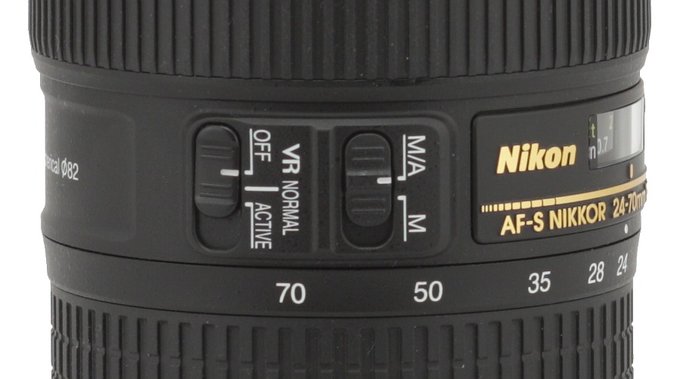 |
Further on you find a plate with the name and the parameters of the lens inside which there is a distance scale behind a window, expressed in feet and meters. On the left side of the lens there are two switches. The first of them (M/A,M) is used for choosing the focusing mechanism mode and the second one controls the optical stabilization (VR OFF, NORMAL, ACTIVE). On the side of the lens opposite to that plate you see information concerning technologies used in the instrument, its filter diameter and an inscription saying it was made in Japan.
A manual focus ring, almost 30 mm wide, is the next part of the lens. Most of its surface is covered by rubbed armour. In my humble opinion the ring is not as damped down as it should be but, on the other hand, it has no visible initial play. Running through the whole scale takes a turn through an angle of 90 degrees – a rather low value I have to say.
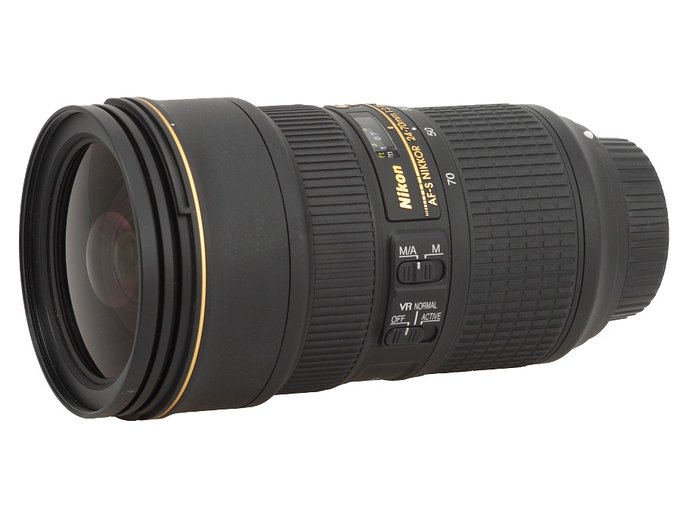 |
A smooth ring with a golden stripe which doesn’t move is the next part of the tested lens; it turns into a hood mount. In the case of the predecessor that part was made of metal but here you deal once again with plastic.
The front element system moves, extending on a smooth tube; it sticks out the farthest at 24 mm and is hidden the most near 50 mm. The front element is 63 mm in diameter and surrounded by a filter thread, 82 mm in diameter.
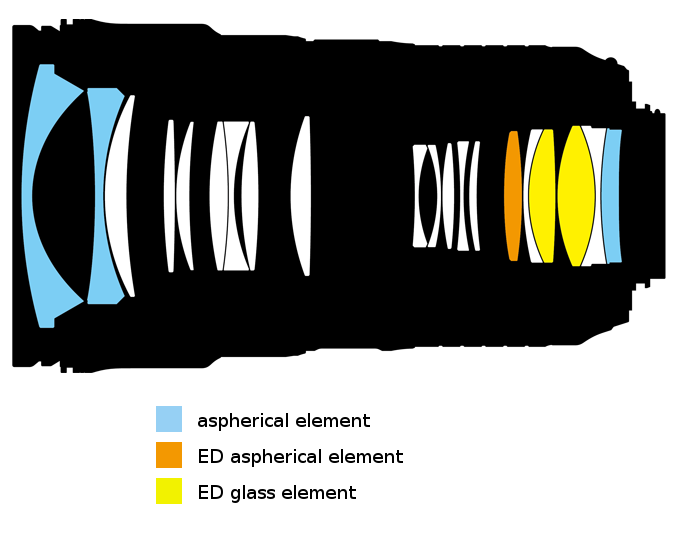 |
Buyers get both caps, a petal-type hood and a solid, hard case along with the lens in the box.
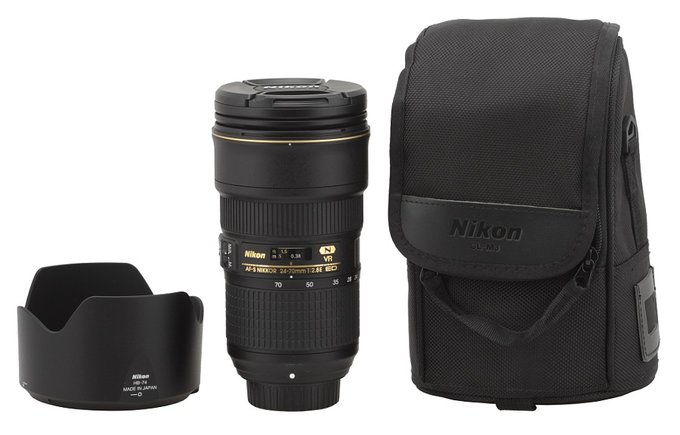 |
Optical stabilization
The Nikon company declares that the stabilization efficiency of the new Nikkor 24-70 mm reaches 4 EV. In order to check that claim we took several dozen of photos for every exposure time ranging from 1/80 to 1/2 of a second with the stabilization unit switched on and off. Then we determined a percentage of blurred photos and presented it as an exposure time function graph, expressed in EV (where 0 EV is an equivalent of 1/60 of a second). An appropriate graph with the results is presented below.
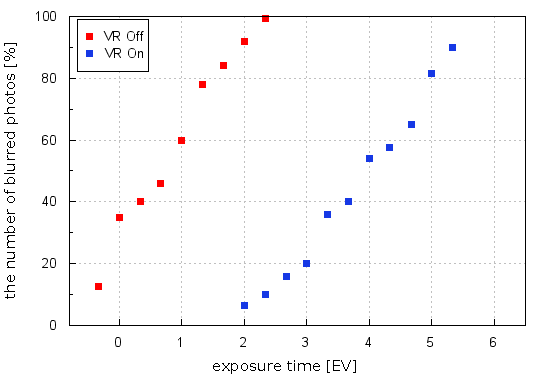
A maximum distance between both curves indicates the efficiency of the optical stabilization. In this case it amounts to near 3.5 EV so it comes short of these 4 EV, declared by the producer. Still such a result is quite good and it is possible the dimensions of the Nikkor don’t allow it to get any better, especially its length which makes the lens susceptible to side play.






